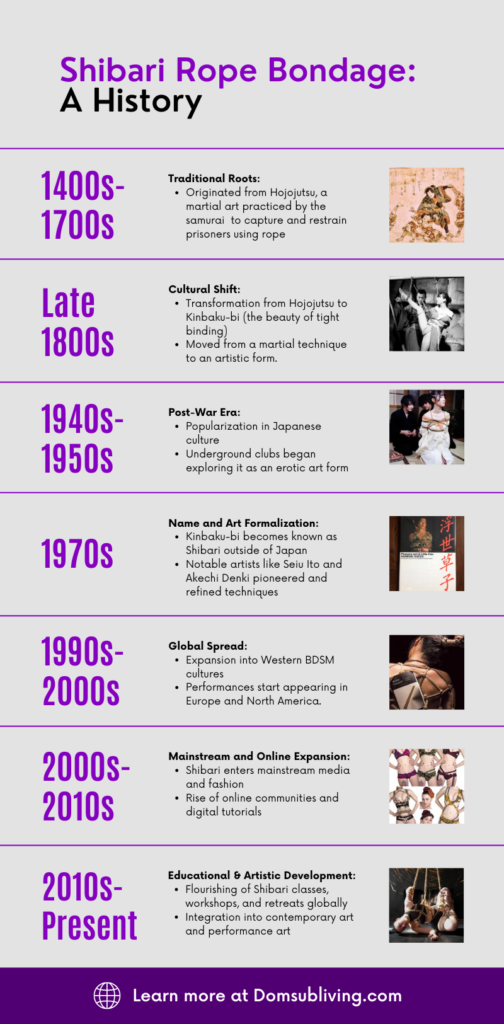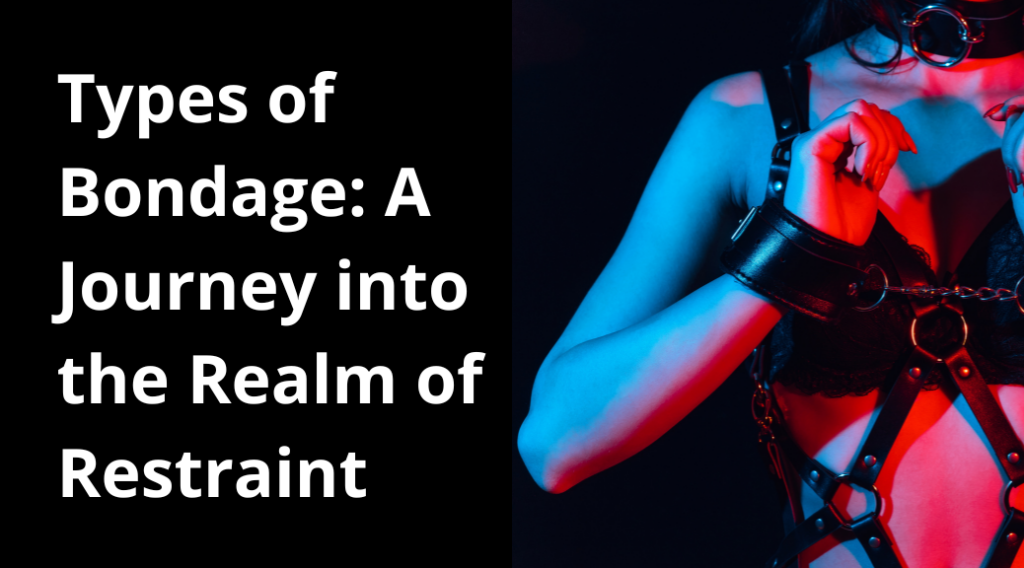What Is Shibari? A Deep Dive into Japanese Rope Bondage

Unraveling the threads of different kink practices, we stumble upon the art form of Japanese rope bondage, raising the question: What is Shibari BDSM? In this article, we’ll untangle the complexities of Japanese bondage, highlighting the essential aspects of safety, consent, and the intimate connection between the Rigger and the model. Get ready to learn all about Shibari bondage!
What is Shibari?
Maybe you’ve seen pictures of it on the internet and wondered: What is the Japanese tying up thing? Well, Shibari, also known as Kinbaku-bi, is a Japaneses word that means, “the beauty of tight binding”. This intricate form of rope bondage began as a way to restrain prisoners in ancient Japan. Over the centuries it evolved into the highly artistic and emotional practice we know today.
Shibari is more than simple rope tying though. It is a profound expression of trust and intimacy. As we delve deeper into the history of Shibari, we see that this practice is deeply intertwined with Japanese culture and aesthetics, influencing various forms of traditional art and performance.

Techniques and Patterns in Shibari Bondage
Shibari bondage is known for its elaborate rope patterns and intricate knots. These patterns are not only beautiful to look at, but are also designed to put pressure on specific points of the body. This can cause a range of sensations and emotional responses.
The Rigger (the person who does the tying) must have a deep understanding of the human anatomy to make sure everything is safe, and to maximize the sensory experience. The practice can range from simple ties to complex designs, each with its own name and purpose.
For example, here is a photo of myself in the “bunny tie”:

Shibari BDSM: A Deeper Connection
In the context of BDSM, Shibari is more than just about physically restraining someone. It is a dynamic form of communication and emotional exchange. The act of being bound can be incredibly powerful and freeing for the rope bottom (the person being tied).
Shibari creates a space for vulnerability, surrender, and heightened sensory awareness that many find extremely liberating. This is why Shibari BDSM is not only about the aesthetic of the ropes but also about the deeper connection and trust that’s involved.
Safety and Consent in Japanese Rope Bondage
Safety and consent are extremely important in all BDSM practices, but especially in Shibari. Before beginning any session, clear communication about boundaries and signals for distress are essential. Due to the physical nature of rope bondage, Riggers must be educated in rope safety. This includes learning how to:
- Properly avoid nerve damage
- Make sure circulation is not cut off
- Quickly release their partner if necessary
The emotional wellbeing of both partners must also be carefully managed, since the intense experiences can sometimes cause “drop”. Aftercare can be a huge help in this regard.
Learning and Practicing Shibari
If you’re interested in learning Shibari, it’s important to have patience and respect for this art form. Since proper technique and safety protocols are best learned hands-on, many people attend workshops and classes. (You can check out the resources in our Dom Sub Training course, for directories of local workshops and classes.)
Online tutorials can also be beneficial, especially when it comes to understanding the basic knots and patterns. However, the specific skills required for advanced Shibari are usually best learned through mentors and ongoing practice.
FAQs
What is the purpose of Shibari?
Shibari can be an artistic expression, a way to create deep emotional connection, and help you explore power dynamics in BDSM. It’s a blend of visual, physical, and psychological aspects.
How does Shibari differ from other forms of bondage?
Shibari emphasizes artistic beauty, intricate rope patterns, and a deep emotional connection between the Rigger and rope bottom. It also requires precise skills and greater understanding of the human body.
What are the key elements of Shibari BDSM?
The key elements of Shibari BDSM include:
- Consent
- Communication
- Artistic expression
- Emotional and physical safety
- Trust
- Vulnerability and control
Is Shibari safe? What safety measures should be taken?
As will all types of bondage there are risks involved, but Shibari can be safe. Just be sure to use appropriate types of rope, learn correct knot placement, have safety scissors on hand, and maintain clear communication. Riggers also need to know quick-release techniques, and both partners should check-in regularly during sessions.
How can beginners get started with Shibari bondage?
If you’re a beginner, start by learning basic knots and patterns from trusted sources such as books, online tutorials, or workshops. It’s also beneficial to connect with the Shibari community to find in-person mentors and gain hands-on experience.
What types of ropes are used in Japanese rope bondage?
The most commonly used ropes in Japanese rope bondage are made from natural fibers like jute and hemp. These are usually preferred because of their durability, texture, and ability to hold knots securely. Synthetic ropes like nylon or polyester can also be used. See my favorite rope recommendation here >>

Conclusion
So what is Shibari? As you’ve seen, Shibari, or Japanese rope bondage, is a complex and beautiful art form that goes beyond simple physical restraint. It can be a deeply spiritual and emotional experience. It’s a blend of trust, intimacy, art, and discipline, making it a unique and profound aspect of BDSM.
Whether you’re a curious beginner or a seasoned practitioner, Shibari offers a playground to explore personal limits, deepen connections, and experience the beauty and emotional intensity that this ancient art form can provide. Happy tying!



